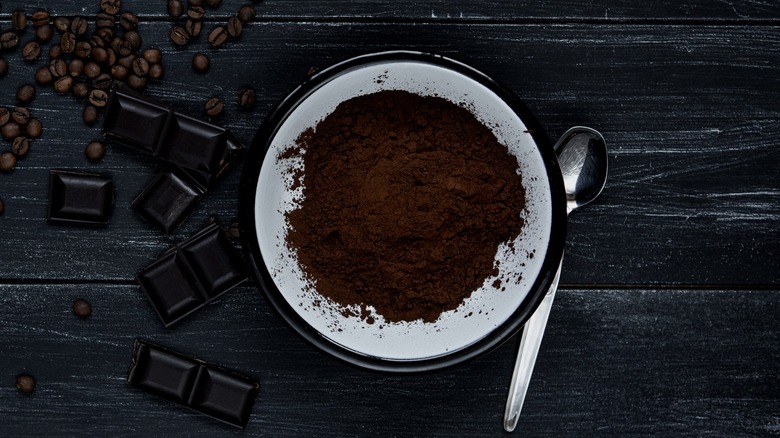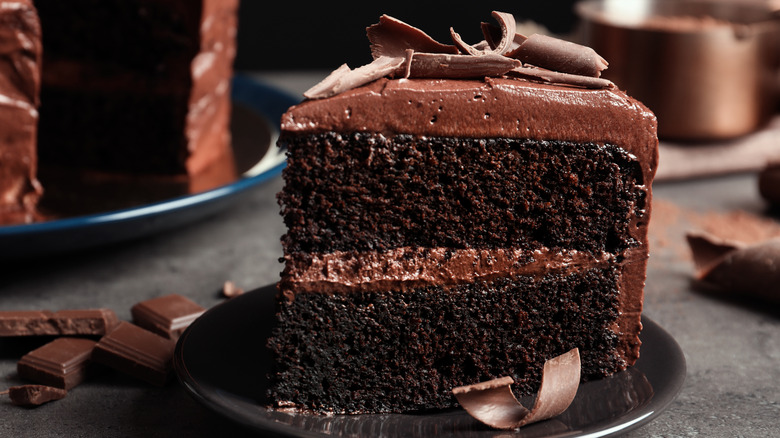Pair Black Cocoa Powder With An Acid For Fluffy Baked Goods
While we all love the smooth and intense chocolatey flavor of unsweetened or natural cocoa powder, which tends to retain much of the subtleties of the original cocoa bean, there are times when using a mellower, earthier chocolate like black cocoa powder is essential. But simply swapping one for the other could have disastrous results. Whether making faux Oreos or the deepest, darkest chocolate blackout cake, pairing the black cocoa with an acid will ensure you don't end up with sunken or flat results.
Black cocoa powder is similar to Dutch cocoa, as both are alkalized, and they can be used interchangeably in recipes that call for Dutch chocolate. But black cocoa powder is more heavily alkalized, which is why some think it tastes more bitter. Unlike natural cocoa powder, black cocoa contains no acid. In contrast with Dutch cocoa, it has little fat, which can make baked goods dry. Adding some Dutch or natural cocoa to the recipe to increase the fat amount is one way to avoid this.
It's worth noting that carbon dioxide is released when baking powder or another acid chemically bonds with alkaline ingredients, causing the dough to rise. So, while a recipe that calls for baking soda — which contains no acid — will turn out perfectly with the acid-containing natural cocoa powder, the results with black cocoa powder will be less than spectacular. Adding an acid, such as baking powder, vinegar, buttermilk, brown sugar, or even coffee, will ensure soft and fluffy brownies, cookies, and bread.
When should you use black cocoa powder?
Black cocoa powder may just be a more heavily alkalized Dutch powder, but some people are still unsure about when to use it in a recipe. The perfect red velvet cupcake recipe uses baking soda, so you'd be forgiven for assuming your only option is natural cocoa, but a closer look at the ingredient list reveals this isn't the case. Since it also contains two acids — vinegar and buttermilk — feel free to swap out the cocoa. Remember, you can use black cocoa in almost any recipe with an acid, whether or not baking soda is also included.
But what if the recipe contains baking soda as the leavening agent and no acids? It's easy to assume no substitution can be made, but if you really want to use black cocoa, go for it. Simply swap the baking soda with four times the amount of baking powder, ensuring your bread rises.
Lastly, use whatever you want for certain recipes containing no leavening agents or specific cocoa requirements, like icing, hot chocolate, and flourless chocolate cake. For most of these recipes, the point is to taste the chocolate or see the color, so go ahead and add dark cocoa powder for the ultimate pitch-black frosting.

